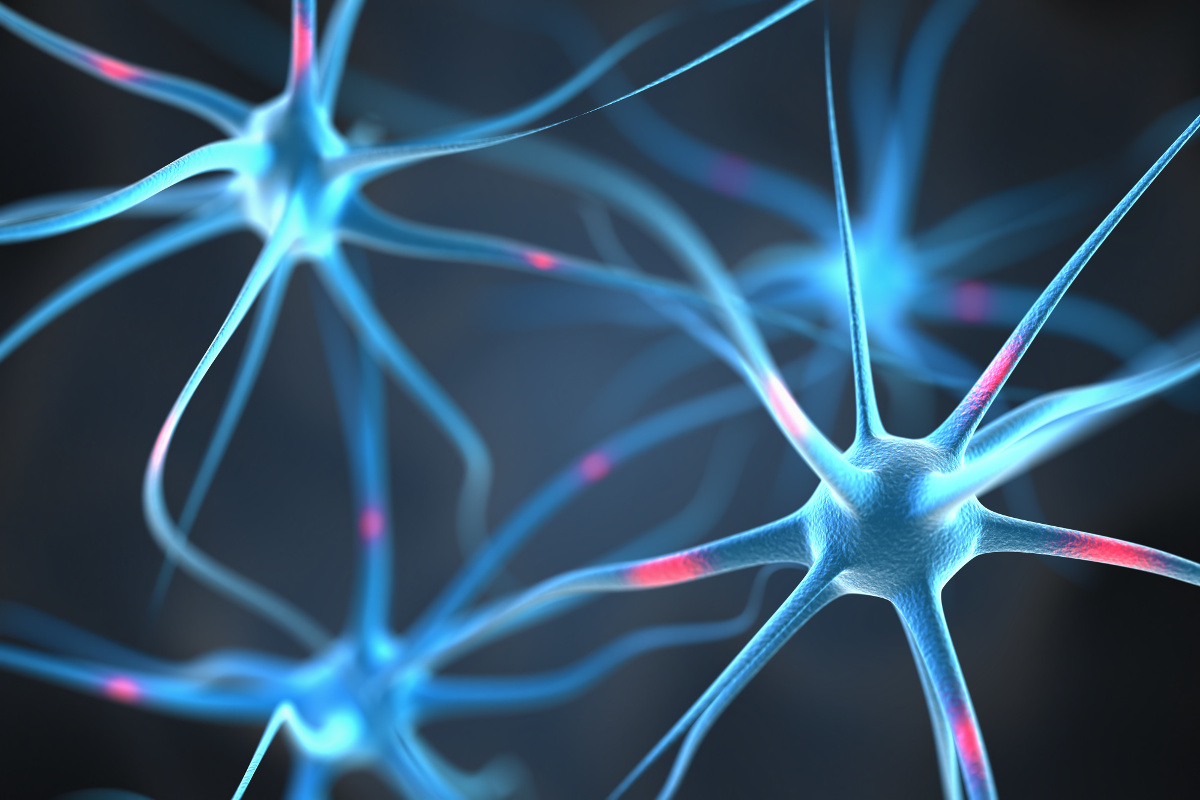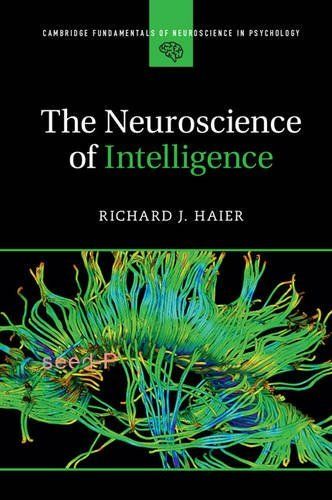Neurodiversity
The Neuroscience of Intelligence: An Interview with Richard Haier
Is it possible to see if someone is high in g by their brain activity on a PET scan or fMRI scan – and if so, what does it look like?

Richard Haier is a Professor Emeritus at the University of California Irvine and is the author of the Neuroscience of Intelligence published by Cambridge University Press. Over his career he has used neuroimaging to study how brain function and structure relate to intelligence, and the ways in which “smart” brains work. He is the editor-in-chief of the journal Intelligence and the past president of the International Society for Intelligence Research. I reached out to him earlier this year to ask about his new book. What follows is an interview conducted with Quillette via email.

The Neuroscience of Intelligence by Richard J Haier, published by Cambridge University Press
Thank you for taking the time to talk to Quillette Professor Haier. You’ve spent forty years studying intelligence and have compiled your knowledge into a new book accessible to the general reader called The Neuroscience of Intelligence, which looks fascinating from its précis. Firstly, can you tell us how you became interested in intelligence research, and how you came about studying intelligence through neuroimaging?
When I started graduate school at Johns Hopkins in 1971, I was interested in social psychology and personality theories. That year Professor Julian Stanley was starting the Study of Mathematically and Scientifically Precocious Youth. I worked on his first talent search passing out pencils for 12 and 13 year old kids taking the SAT-Math exam [a standardized test used for college admission in the US]. The kids had been nominated by their math teachers as the best students in their class. Many of these kids scored as high on this test as college freshman at Hopkins. How they got this special math talent was a fundamental question and it certainly looked like something that came “naturally” since they had not yet had many math courses in school. This started my interest in individual differences in mental abilities, and intelligence was the most interesting and controversial mental ability.

Emeritus Professor Richard Haier
It was after grad school during my first job at the National Institute of Mental Health that I learned more about genetics and how to study the brain with EEG. All these threads came together when I moved to Brown University and started my own lab to study intelligence. In the 1980s, the first neuroimaging with positron emission tomography (PET) became available and I joined my former NIMH colleagues who had moved to UC Irvine and acquired a PET scanner. I used my access to the scanner to study intelligence and brain function, including a study of math reasoning in college men and women, bringing me full circle back to the Hopkins study. Over the next 30 years, neuroimaging developed further with MRI and other technologies that I used to follow the intelligence data even deeper into the brain.
Can you remind me what the difference is between g and an IQ score?
One of the most robust, replicated findings in the entire field of psychology is that all tests of mental abilities are positively correlated with each other. This implies there is a common mental ability that accounts for these associations. This common ability is called the general factor of intelligence, abbreviated as the g-factor. Some tests require more g than others and no one test is a pure measure of g. The best estimate of the g-factor is based on combining scores from a variety of tests that tap different cognitive domains. IQ tests usually combine scores on several subtests that sample from different mental abilities so the IQ score is a good estimate of g. The g-factor is the focus of most intelligence research, especially research that aims to determine why people differ. Based on decades of compelling data (including the latest DNA analyses), many researchers, myself included, think that the g-factor is influenced mostly by genetics. That’s key because it indicates that intelligence can be modified once genetic/neurobiological mechanisms are understood. This is why neuroscience is starting to focus attention on intelligence.
Is it possible to see if someone is high in g by their brain activity on a PET scan or fMRI scan – and if so, what does it look like?
Our first PET study and many subsequent studies suggest that high intelligence is associated with more efficient brains; there are also indications that more gray matter in certain brain areas and more connections among brain areas are associated with more intelligence.
Since the first neuroimaging studies of intelligence, researchers have been trying to predict intelligence test scores from images. All such attempts had failed independent replication up to the time I was finishing the book and I explained why this was the case. However, right after I submitted my manuscript, a new study suggested this kind of prediction had succeeded. It was based on a mathematical way to assess how brain areas were connected to each other using MRI scans. Apparently, such connection patterns are stable and unique to individuals like fingerprints; and these patterns predict intelligence test scores. I was able to add this study to the book, but it is still not clear if these claims will pass independent replication. If so, there will be many questions to investigate like whether there are sex differences, and age differences that have a developmental sequence. A key question will be how such brain patterns change with learning.
I also describe new neuroscience techniques used in animals to turn neurons on and off to see how behavior changes. It may be possible to adapt some of these techniques for use in humans to study performance on mental tests experimentally instead of by correlations. This is an exciting prospect, especially for young investigators and students thinking about a career in this field.
Can the same methods to study intelligence through neuroimaging also be used to study personality traits and creativity?
The general answer is yes, especially for personality because personality assessment is quite sophisticated and the measures can be correlated with brain characteristics. There are already a number of studies that do this, although the brain areas implicated in personality traits seem to be mostly separate from the areas related to intelligence. Creativity studies also use neuroimaging and I discuss several of them in the book. Creativity is more of a challenge because it is more difficult to measure. Nonetheless, there are interesting findings that suggest overlap with some areas related to intelligence. This is another exciting field for neuroscience attention.
I notice that many people seem to think that intelligence research as well as genetic research might stigmatise those who are low in intelligence. While I think this risk is real, could it not also have the opposite effect of promoting compassion for those who are less fortunate? And is it possible that this compassion could also be translated into more effective social welfare policies that would actually help less fortunate people?

Lower intelligence is a limiting factor when it comes to education, employment, and economic success but IQ has nothing to do with dignity, friendliness, compassion, honesty and a host of other positive human attributes. Access to all the opportunities imaginable will not be effectively used by individuals with low IQ through no fault of their own. There is no rational reason to stigmatize people and every reason to provide support in everyway possible.
Intelligence research has been controversial for a long time. Is it your hope that the field will become less controversial and understanding of the empirical findings more widely known amongst policy makers and educators? What do you think are the costs of not being aware of this field of science?
Neuroscience approaches have already made intelligence research more mainstream and ready for inclusion in policy discussions. For example, the single most important factor that predicts school success, by far, is the student’s intelligence. Social economic status, family resources, school and teacher quality all pale in comparison. The data showing this is overwhelming. Yet, the word “intelligence” is virtually absent from all discussions about education policies in the United States, and many other countries. Even if intelligence is mostly influenced by genes, all that means for education is that each student comes to school with a different set of strengths for learning. Teachers all know this and the common goal is to maximize each students potential. Attempts to create policies to do this without paying attention to what we know about intelligence have failed for decades, especially with respect to closing achievement gaps. My view is that neuroscience/intelligence research offers the potential to increase intelligence and learning. It’s time to start discussing these possibilities and I devote a section of the book to this.
Finally, what advice would you give to a student who wants to pursue this line of research? What are the best schools and universities to think about applying at?
Neuroscience courses are easily found at most colleges and universities. Undergraduates can work on research projects using neuroimaging at many universities. Strong math skills help understand the image analysis methods being used. It is more difficult to learn about intelligence research because most psychology departments, at least in the US, do not offer upper division courses on intelligence. Undergraduates typically are limited to a chapter in an Introductory Psychology textbook, often written by and taught by a professor with limited knowledge of recent advances. Given that intelligence is one of the most important variables in all of psychology, this borders on academic malpractice. But, be persistent. This is a Golden Age of intelligence/neuroscience research. The questions are exciting, the technology is amazing and I encourage students to think about how they might contribute to testing new ideas and expanding what we know.
Thank you for talking to us, Professor Haier! Is there anything else you would like to add?
Only this: Over my career I have seen unbelievable advances in understanding the nature of intelligence despite concerns about what the data might mean. The most important thing in science is to go where the data take you. You will undoubtedly be surprised, and delighted that you have helped discover new things. This is how society advances.
Richard Haier is a Professor Emeritus at the University of California Irvine and is the author of the Neuroscience of Intelligence published by Cambridge University Press.
Claire Lehmann is the founder and editor of Quillette.
See also: The Ethics of Cognitive Enhancement






